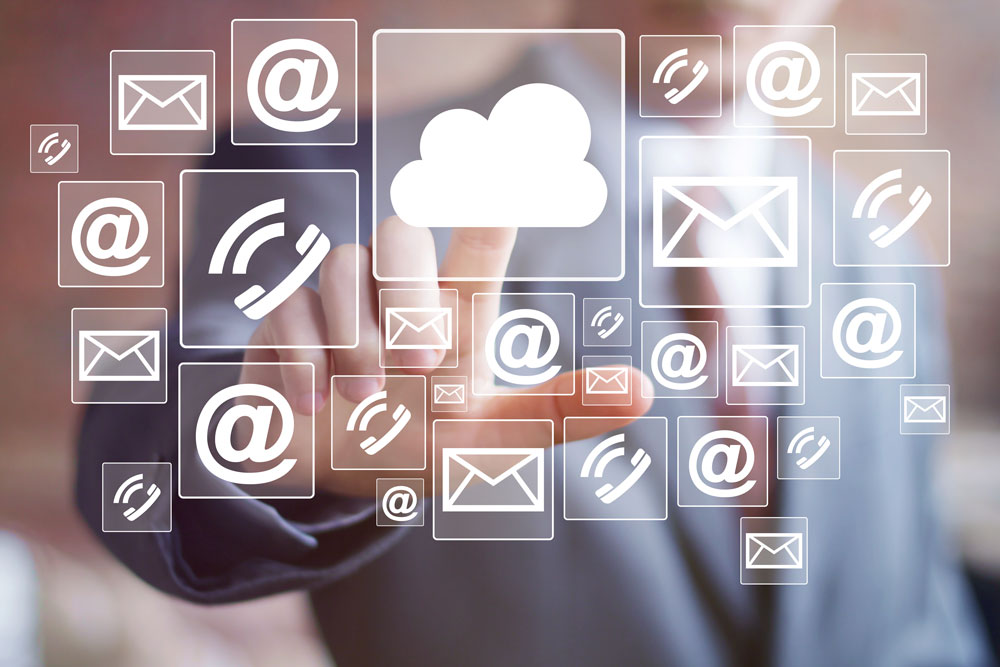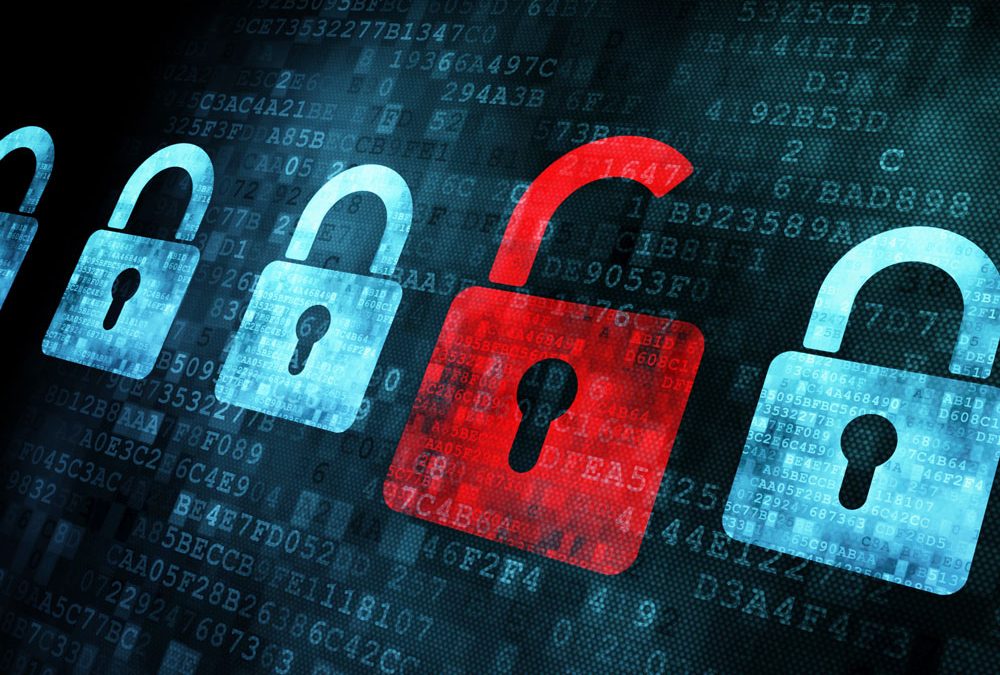
Feb 6, 2018 | SMB Technology, SMB Technology, SMB Technology, SMB Technology, Technology News
The time may be right for your business to move to the Cloud. With its many advantages, including cost savings, security, and flexibility, cloud computing also gives businesses a competitive advantage, allowing employees to work anytime, anywhere. According to an article by Forbes, the trends indicate more and more cloud usage, with an increase from 19% to 57% in 2016 and 2017. By the end of 2018, 80% of all IT budgets will be dedicated to the Cloud. According to the ninth annual CompTIA Security Trends Study, more than 59% reported moderate to heavy usage, and nearly three-quarters have confidence in providers’ ability to produce a secure cloud environment. Benefits of Moving to the Cloud Why move to the Cloud? One reason businesses migrate is being able to work across multiple devices including mobile, desktop and laptop computers. Cloud computing is scalable and can handle extra demand as your business grows. Not only that, but more employees work remotely, and Cloud computing enables teleworkers to access the company’s cloud-based systems when working remotely. Lastly, moving to the Cloud can, in many cases, convert the capital expense (CAPEX) of hardware and infrastructure to a predictable operating expense(OPEX). Efficiencies of Cloud Computing Predictability of cost is one key reason businesses make such a strategic decision. With Software as a Service (SaaS) and Infrastructure as a Service (IaaS), businesses can eliminate the up-front costs of hardware and systems updates, and phase out aging hardware. While the business will need to plan for customization, migration, and integration, Cloud computing allows customers to pay a predictable cost for the resources they use. What...

Jan 16, 2018 | SMB Technology, SMB Technology, SMB Technology, SMB Technology, Technology News
Most businesses today have adopted some form of Cloud Computing and Software as a Service (SaaS) to run their business. According to a recent article by Forrester Research,“SaaS Improves Business Results Due To Greater Innovation and Agility — And Is Increasingly The Foundation for Business Opportunities.” Rather than investing up front in costly infrastructure, implementation and configuration, Cloud Computing using Software as a Service provides an economical and turnkey approach to access the latest technology at an affordable price. Here are some examples. Cloud Computing to Improve the Customer Experience Call Center, Chat, Unified Communications, VoiP and other customer-facing technologies can be rapidly deployed within your business using the SaaS model. Cloud Computing provides flexible deployment options based on your needs and an economical subscription approach instead of an upfront Capital Expense (CAPEX). Make sure your network and infrastructure is ready to handle the additional load that comes with increased Voice and Data traffic associated with these solutions. Cloud Backup to Protect Your Business Another popular use of Cloud Technology is for data protection in the form of Cloud Backup. Using Cloud Backup rather than antiquated tape or on-premise storage gives added protection and rapid recovery when things go wrong. What’s more, many Cloud suppliers of SaaS solutions include backup capability within their application so you won’t need to worry about business disruption in the case of a failure. Hosted Business Applications There is an ever-widening range of business applications including CRM, Accounting, HR, Email and more. You may be using these SaaS applications in your business and taking advantage of working anywhere and on any device (mobile, tablet...

Jan 9, 2018 | SMB Technology, SMB Technology, SMB Technology, SMB Technology, Technology News
The technology industry is working to patch two network security flaws known as Meltdown and Spectre Vulnerabilities. These hardware bugs can expose information being processed or stored in memory on your computer. While there are no known exploits, malware or phishing schemes specific to these network security vulnerabilities, this reminds us of the importance of Network Security best practices to protect Windows PCs and Macs, as well as Android and Apple iOS Mobile Devices. While the industry rushes to patch these network security vulnerabilities, here are some considerations to protect your network. Keep your Operating Systems Patches Up to Date Make sure you install security updates for your operating system and applications. Apple (AAPL), Google (GOOG), and Microsoft (MSFT) have already released some patches. You can do this manually through automated updates, or subscribe to a managed service to keep your network current. Keeping your browser up to date will also prevent websites from attacking your processor to steal your password and other privacy data. Don’t Forget Updates on Mobile Devices The Meltdown and Spectre Vulnerabilities serve to remind us of the importance of keeping smartphones, tablet computers, and other mobile devices updated with the latest operating system and related security patches. Also, remember to download software only from trusted sources. Employers should remember to review acceptable use policies to ensure they are up to date and that employees comply with company mobile device acceptable use. Train Your Employees on the Importance of Network Security Your employees are on the front line of defense for network security. Through periodic education and training your employees will implement strong passwords and...

Dec 13, 2017 | SMB Technology, SMB Technology, SMB Technology, SMB Technology, Technology News
This time of year we make our lists and check them twice. Is your technology in check for the new year? Here are some checklists to keep and plans to make to get the most from your technology in the new year. Verify Your Backup Data Backup isn’t enough if you don’t periodically verify your backup to ensure it is available for recovery. If this isn’t part of your routine systems maintenance, add this to your New Year’s resolutions to ensure you can rapidly restore your business systems if you suffer a data loss or breach of privacy data. Certify Your Compliance Many industry regulations including The Payment Card Industry Data Security Standard (PCI DSS) require periodic PCI certification to demonstrate compliance. Updating your policies and procedures related to network security and other best practices is part of demonstrating PCI compliance. If you are considering online commerce in the new year, also plan to including periodic network monitoring to maintain PCI compliance throughout the year. Create a Security Checklist Threat of Cyber attack is expected to continue for the foreseeable future. Consider creating a Cyber Security Checklist in the new year. The American Institute of Certified Public Accounts (AICP) has a 20-point Cyber Security Checklist that is worth a read. Also be sure to review your password. Upgrade Your Network Your network is the backbone of your company’s technology platform. Today’s applications put more demand on your network than ever. Increased traffic from communications and collaborations applications, VoIP, and digital media puts additional strain. Multi-location organizations, and those with remote employees, also need reliable network infrastructure. Assess your network...

Dec 7, 2017 | SMB Technology, SMB Technology, SMB Technology, SMB Technology, Technology News
Businesses today are under constant attack from Cyber Criminals. Ransomware, including the WannaCry Virus , is an example of a top threat to avoid. With the risk of lost data, lost productivity and lost reputation, isn’t it time to close the door on Cyber Crime? Here are a few tips to defend your company from potential cyber attacks. Document Operating System Security Patch Policies and Procedures Take the time to review and update your documented security policies and procedures. Security and related patch policy should identify who is responsible for application and operation of system patches and system updates. Clearly determine whose responsibility it is to apply the latest operating system and related security patches. Whether this process is manual, or done automatically through a managed service, be sure your employees know which is the case. Also, document your policies to verify all your systems are in compliance. Review your Cybersecurity Framework Avoid data breaches resulting from lack of Cybersecurity defence. Ensure your AntiVirus and Malware detection definitions are up to date. Utilize spam filtering and other Cyber Threat detection to protect your business. Consider penetration testing to identify any weaknesses on your network. Also ensure your employees are periodically trained to identify and avoid malware and phishing schemes. If you have suffered a data loss due to Cyber attack, ensure you have a communications plan to notify all stakeholders and authorities within adequate time frames. Having a solid data protection plan including Cloud Backup can minimize your exposure and increase your recovery time. Study Machine Learning to Combat Cyber Threat Cybercriminals are using automation, artificial intelligence and machine...

Nov 20, 2017 | SMB Technology, SMB Technology, SMB Technology, SMB Technology, Technology News
Companies large and small have migrated to the Cloud Computing model for economic and competitive advantage. As you evaluate your options, here are some questions to ask that will help you get ready. On-Premise vs. Cloud? Do you have mission-critical files and applications on premise? If so, your applications and their data may be at risk. If you are in a flood zone, fire zone or area of extreme weather your systems could be in jeopardy. Cloud computing data centers consolidate infrastructure in areas that are adjacent to reliable power grids, like near hospitals and police stations. Your cloud infrastructure is likely out of harm’s way and/or reliably redundant in multiple locations. Is Your IT Infrastructure Near End of Life? We all try to get the most from our investments. Your Infrastructure may be at the end of a warranty period or perhaps your applications and operating systems are no longer on the current version or are no longer supported. You may be able to squeeze a little more out of your desktops and laptops if you access your applications and data via a virtual desktop or software-as-a-service solution, provided the operating systems can be upgraded and secured. However, your on-premise servers may put your business at risk if you are relying on older hardware that is subject to failure. What’s more, this may be the weak link in your network security, inviting unauthorized users to access and infect your network. Do your Employees Work Remotely? Cloud computing lets you access your applications and data from anywhere, any time, in a secure manner. Many popular Cloud applications also...







